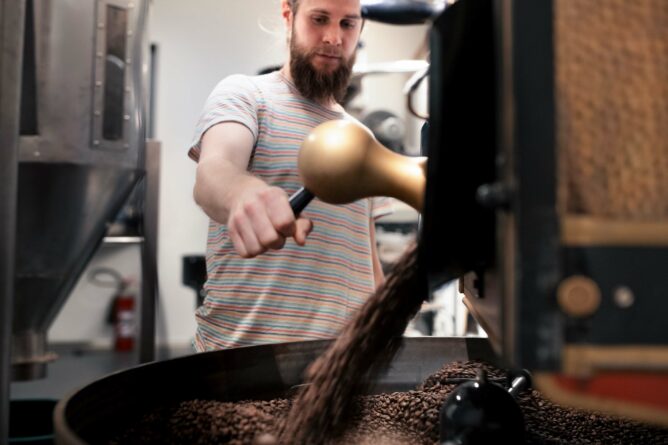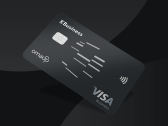YRITTÄJÄ, tule mukaan omiesi pariin! Liity Yrittäjiin.
Growth and development

From invention to product: steps to commercialized innovation
Product and service development are the cornerstones of successful business.
The path of an idea or invention to the markets goes through many stages: before the actual production and marketing come design, trial production, development and evaluations. This page will get you started with your own development plans.
Signs of a good product or service
In the beginning, you should recognize the signs of an innovative product or service. They include:
- The product is market driven and there is demand for it.
- The product meets customer needs better and more cheaply than existing solutions on the market.
- The product solves a previously unresolved problem, thus creating a new market.
- The product is inventive, new and patentable.
- The product is significant for a current or new business.
- The product is functional, manufacturable and competitive.
- The product can be brought to the market quickly.
- You want to commit to the product and to developing it.
- Financiers are interested in it.
- The product conforms to industry standards and official regulations.
Development begins with evaluation
At the evaluation stage, you work out the opportunities for a new product based on prior criteria. At the same time, you try to see the opportunities for future business.
Commercialization is key throughout the process. You have to have a market for the product in mind, the goal of selling it.
When you have developed your new idea to a certain level, you can start writing a business plan.
Developing a product
The next stage is product development. It involves a wide range of technical, production and commercial plans and analyses.
The idea or invention is the basis for prototypes, which are piloted and tested until a completely new product or better version of an old product is ready, and actual production can begin.
Product development must be goal oriented, efficient and thorough to ensure no technical faults or defects end up in the product. Design and industrial design are also important parts of planning a product.
It is important that an expert in the field manufactures the new product. The person responsible must be experienced. Networking can be useful here.
While developing a product, it’s a good idea to consider protecting the intellectual property rights to the innovation. Protect yourself against imitators through options such as a patent, utility model, trademark, design right and copyright. Bear in mind that you may are not entitled to a patent, for example, if the invention has already been published.
Productization options
If your business made the invention, your options for productization are:
- Your business productizes, manufactures and markets the product itself.
- You subcontract manufacturing, but your business is responsible for marketing.
- You sell the product or product idea to another business.
- You sign a licensing contract under which your business surrenders certain usage rights to the invention in exchange for compensation. Your business retains ownership rights to the invention.
If the invention was made by a private person, researcher or working group that does not work in a business in the sector, the options are:
- The product licence is sold to a business in the sector for manufacturing and marketing.
- A new business is registered.
- A cooperation contract is signed with a partner to productize the invention.
Where can you outsource product development?
You can contact other businesses in your sector, as many of them will do product development on commission. You can sign a product development contract with them. A consultancy firm can help you with design, calculations, and financial and market investigations.
You can have technical prototypes, product development and testing done by universities of applied sciences, universities or VTT, the Finnish state-owned technical research centre. Organizations such as the Keksintösäätiö invention foundation, the prototype workshop of the Helsinki investors’ association Helsingin Keksijät HEKE ry, and other prototype workshops.
At the product development stage, you should be particularly diligent regarding confidentiality and non-disclosure treatments. Ask for quotes in writing; the same goes for service agreements and schedules.
Where can I get finance?
Product development almost always requires external finance, such as a bank loan. Finnvera, owned by the Finnish state, also offers businesses additional finance for expansion and growth.
It’s worth taking advantage of various supports. For example, the Centres for Economic Development, Transport and the Environment (ELY Centres) offer financial support to SMEs for commercializing inventions. The state-owned Business Finland can also offer support for research and innovation.
Growing your business: many ways are possible
The growth of any business relies on its owner’s desire for growth, a good business idea, and strong skills. Many forms of support and advice are available for businesses seeking growth.
To grow a business, additional finance — a loan, support or new capital — is always needed, and to get that, the business must have a firm foundation. In addition to finance, growth requires real desire, passion and of course skills. To grow your business, you’ll need to work hard, meaning you and all your employees will have to commit to it and be ready to learn.
In what ways can a business grow?
A business can seek growth in many ways. If you have already identified your business’s growth needs, think about the following options. You can grow your business by:
- Expanding in Finland and abroad
- Buying a competitor
- Developing products and innovating
- Developing skills
Expanding in Finland and abroad
Your business can grow by expanding is operations in Finland and beyond. When planning on spreading your operations elsewhere, you often need both additional finance and a range of advice.
You can apply to banks for additional funding. Finnvera, owned by the Finnish state, also offers businesses additional finance for expansion and growth.
It’s also worth taking advantage of various support schemes. For example, the Centres for Economic Development, Transport and the Environment (ELY Centres) offer support for SME growth, and Business Finland has a wide variety of supports for businesses with their eye on international markets.
When expanding abroad, in particular, you will need a lot of information and advice.
Business acquisitions and changes of ownership
Changes of ownership are an important tool for growth. A business can grow by acquiring another business’s existing operations. Through acquisitions, you can expand your market share and expand into new fields. Other ways businesses change hands is when the next generation takes over, and other ownership arrangements.
Developing products and innovating
You can achieve growth by developing new products and services and bringing them to the market. Remember that a growth-hungry business can apply to places like Business Finland for assistance and finance for product development and innovation. It’s also worth remembering that businesses’ and research organizations’ innovation networks can offer opportunities for developing your business.
Developing skills
Growth is impossible without continual learning. This is vital for success.
Knowhow is one of your business’s most important resources. It’s important to ensure that your and your employees’ skills are up to date.
Remember apprenticeships, in particular. For a business owner, apprenticeships are a good way to recruit and train staff for completely new positions. Business owners can also be apprentice themselves in their own businesses.
To help you, we’ve written two guides in which we tell you what you can do to ensure you continue to develop, and how you can support development of your employees’ competence.
To grow, you may of course also need new employees — or growth might allow you to hire more people.
How is a growth enterprise defined?
As defined by the OECD and the EU, a growth enterprise is a business which initially employs at least 10 people and in the next three years increases its headcount by at least 20% a year.
Statistics Finland uses headcount increase as its general criterion for growth enterprise status, but growth in business activity can also be measured in turnover.
A start-up, on the other hand, is generally a young business, no more than a few years old, with a basis in innovative ideas. It is only developing its first product and not necessarily yet turning a profit. Start-ups also generally pursue rapid growth. A start-up is thus often a growth enterprise, but a growth enterprise is not necessarily a start-up. It’s worth bearing in mind that all business, regardless of age or sector, start-up or not, can pursue growth.

Enjoy the benefits



